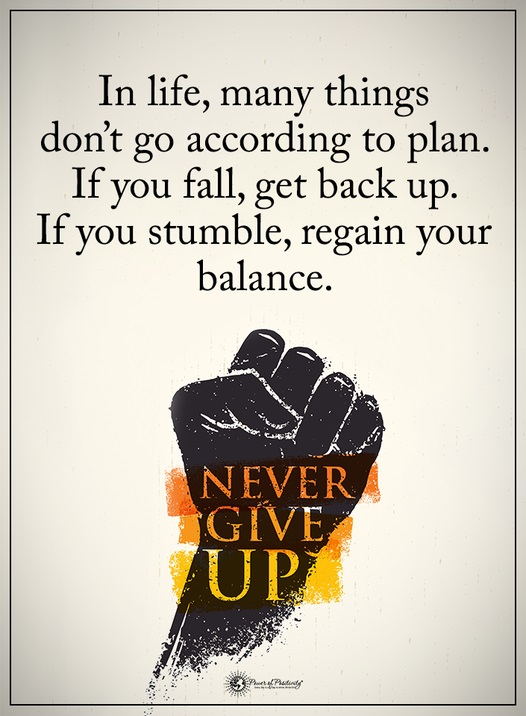Ready to shape your abs at home? No gym, no problem—tone your midsection quickly and easily. Whether you’re short on time, space, or equipment, getting a toned midsection at home is entirely doable. In this article, I’ll walk you through the best abs workout at home without equipment that will leave your core burning and your confidence growing.
Ab workouts do more than improve your looks—they also boost your body’s stability and strength. And the best part? You don’t need fancy gear to make it happen. You just need consistency, determination, and the right moves.
Let’s start a simple, effective workout you can do in your living room—no weights needed!
Why No Equipment is Effective for Abs

Bodyweight exercises boost core strength by using multiple muscle groups without extra equipment. The primary reason bodyweight exercises work so well for your abs is their versatility and accessibility.
By using just your body weight, you challenge your core muscles to stabilize your entire torso during movements, which builds functional strength.
Plus, you can do bodyweight exercises anywhere, from your living room to a park. There’s no need for fancy machines or gym memberships.
 Improved Balance: Exercises like planks enhance stability, vital for sports and daily tasks.
Improved Balance: Exercises like planks enhance stability, vital for sports and daily tasks. Functional Strength: Exercises like mountain climbers strengthen your abs and other body areas, improving coordination.
Functional Strength: Exercises like mountain climbers strengthen your abs and other body areas, improving coordination. Endurance: Holding exercises like planks boosts core endurance over time.
Endurance: Holding exercises like planks boosts core endurance over time.
10 Best Ab Exercises Without Equipment
Plank
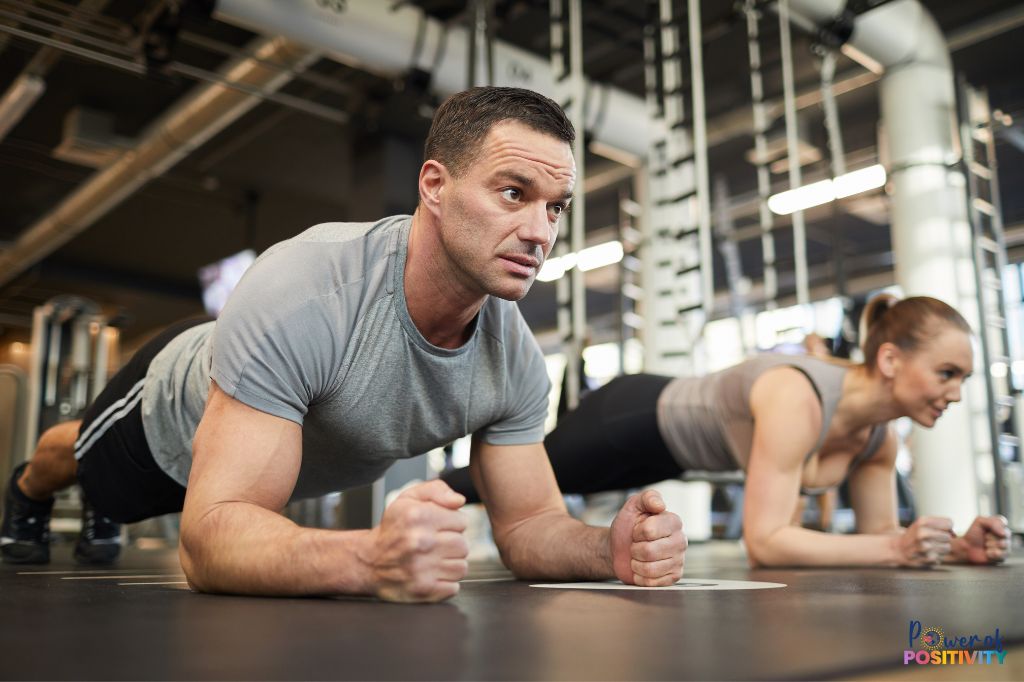
- How To: Position your forearms on the ground, and contract your abs, keeping your body in a straight line from head to toe. Hold the position without letting your hips sag.
- Benefits: Strengthens the core, improves stability, and supports posture.
- Reps/Sets: Hold for 30-60 seconds, 3 sets.
Bicycle Crunches
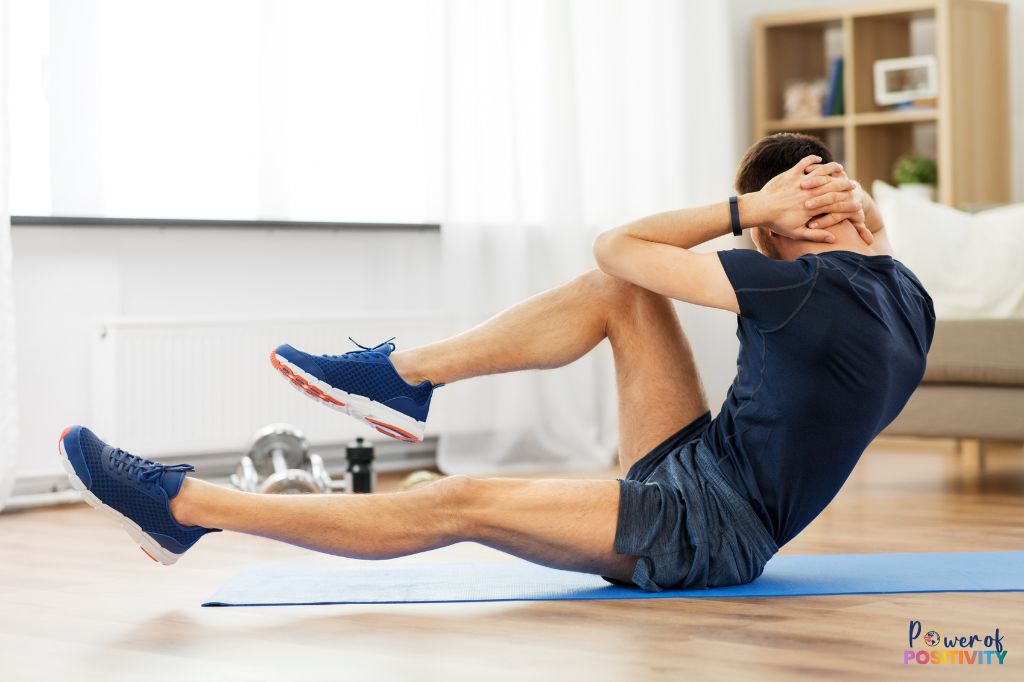
- How To: Lie on your back, bring knees to a 90-degree angle, hands behind your head, and alternate bringing your elbow to the opposite knee.
- Benefits: Targets both upper abs and obliques, enhancing rotation and core definition.
- Reps/Sets: 15-20 reps per side, 3 sets.
Leg Raises
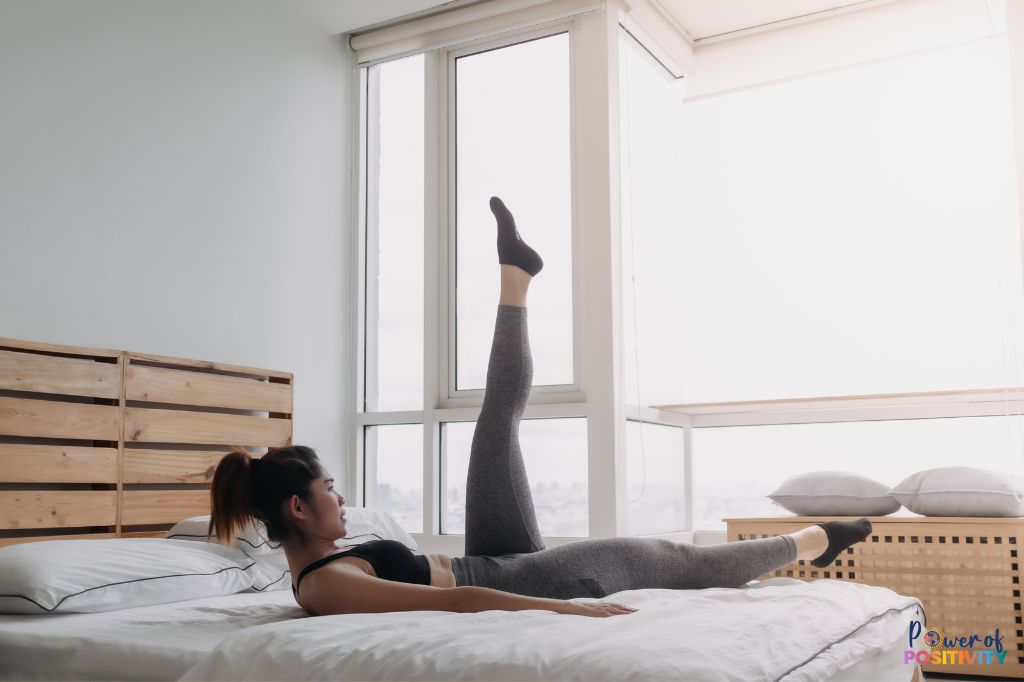
- How To: Lie flat, legs extended. Raise legs to the ceiling, slowly lowering them without touching the ground.
- Benefits: Primarily works the lower abs, improving lower core strength.
- Reps/Sets: 10-15 reps, 3 sets.
Russian Twists
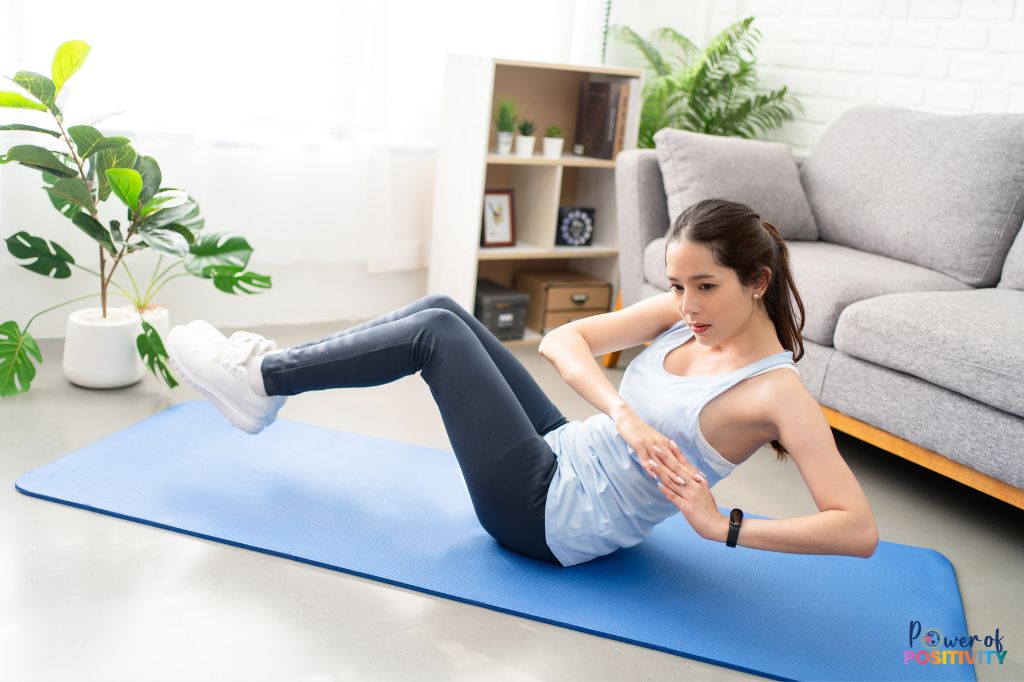
- How To: Sit on the floor with your knees bent, lean back slightly, and twist your torso from side to side, touching the ground with your hands.
- Benefits: Engages obliques and improves rotational core strength while toning the entire midsection.
- Reps/Sets: 20 twists per side, 3 sets.
Mountain Climbers
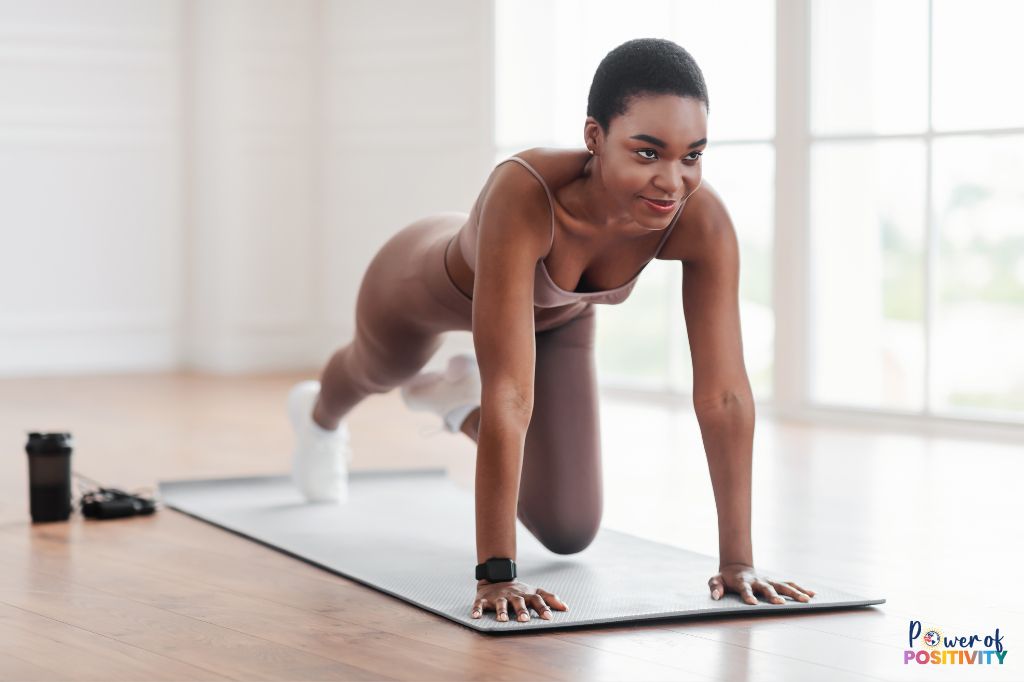
- How To: Start in a plank position and quickly alternate, bringing one knee toward the chest.
- Benefits: Adds cardio to core training, burning calories while strengthening the abs.
- Reps/Sets: 30 seconds, 3-4 sets.
Flutter Kicks
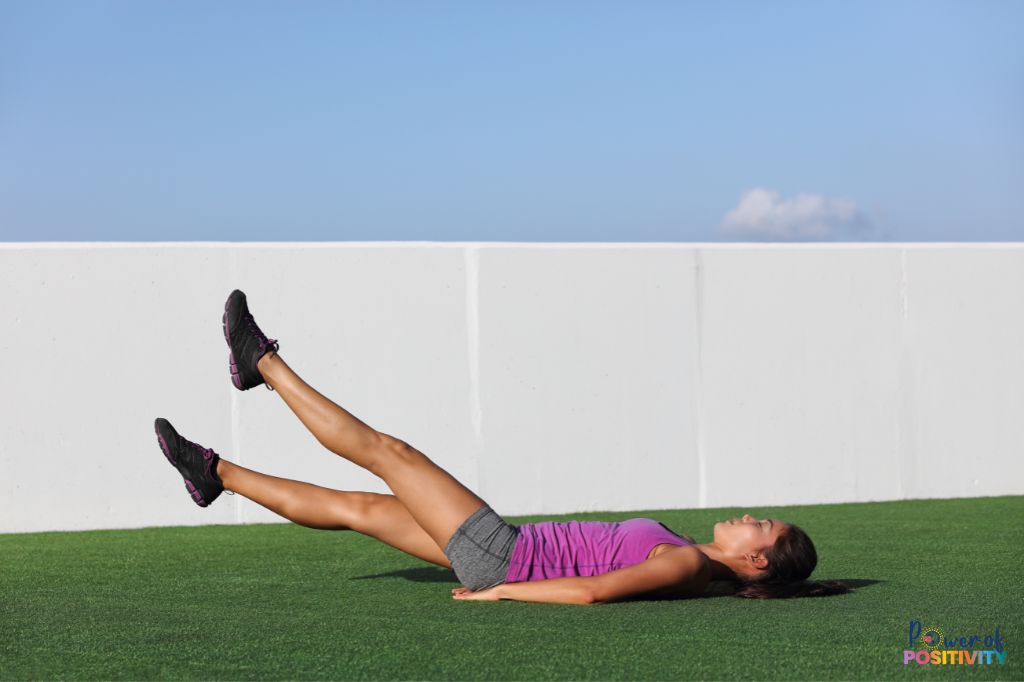
- How To: Lie on your back with legs extended and hands under your hips. Lift your left leg and then your right alternately, slightly off the ground, and kick them up and down in a controlled manner.
- Benefits: Focuses on the lower abs, improving strength and endurance, while also engaging the hip flexors.
- Reps/Sets: 30 seconds of kicking, 3 sets.
Hollow Body Hold
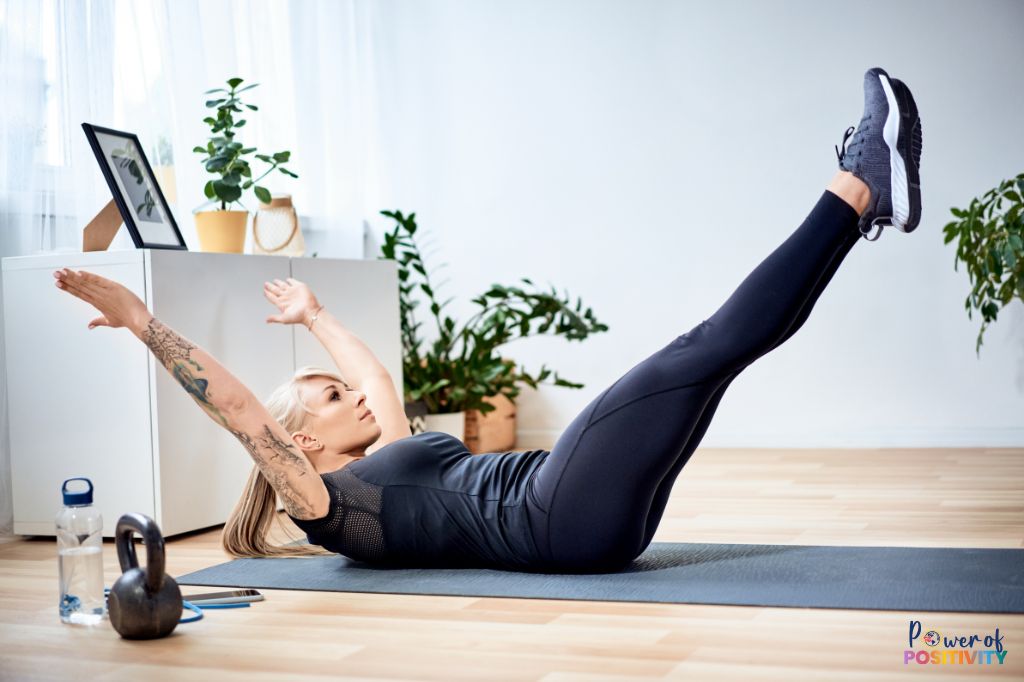
- How To: Lie on your back with arms overhead and keep your legs straight and extended. Engage your core, lifting your arms and legs off the ground while keeping your lower back pressed into the floor
- Benefits: Builds core stability and overall strength, challenging the entire core, especially the lower abs.
- Reps/Sets: Hold for 20-30 seconds, 3 sets.
 Best Stretches for Lower Back Pain Relief
Best Stretches for Lower Back Pain Relief
Dead Bug
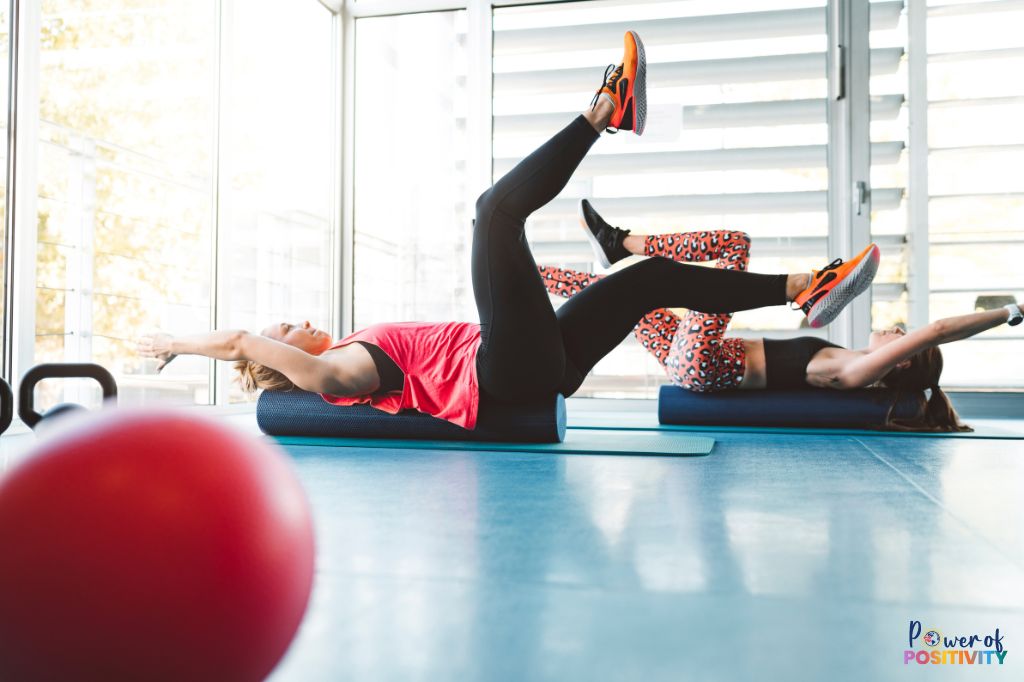
- How To: Lie on your back with arms extended toward the ceiling and legs in a 90-degree angle. Lower one arm and the opposite leg toward the ground, then return to the starting position and switch sides.
- Benefits: Enhances core stability and coordination while working both the upper and lower abs.
- Reps/Sets: 10-12 reps per side, 3 sets.
V-Ups
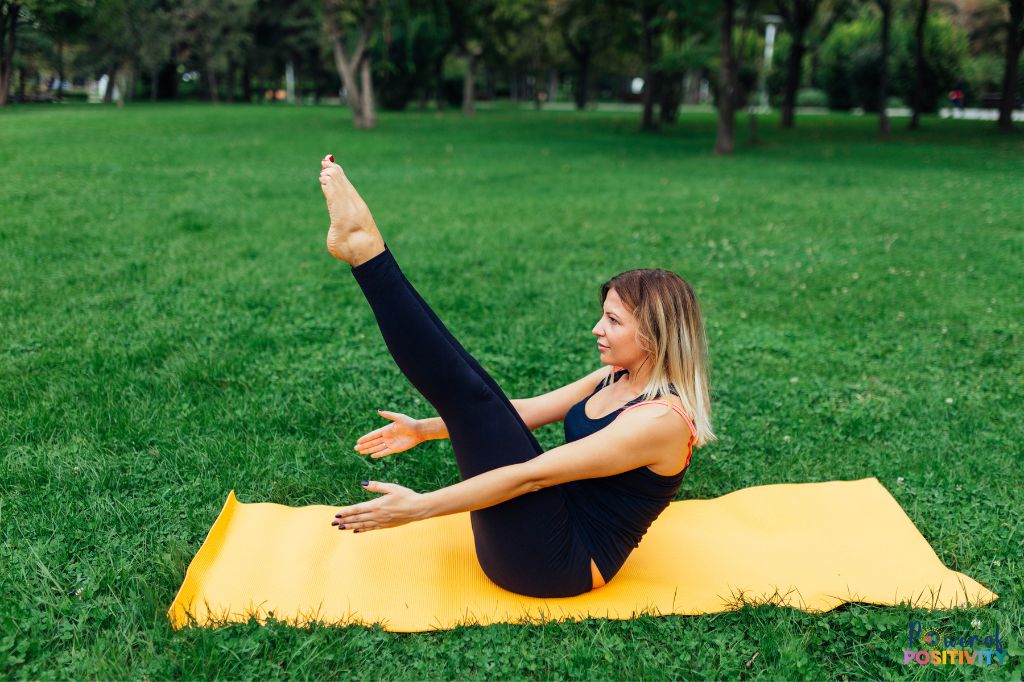
- How To: Lie flat on your back with arms extended overhead. Simultaneously lift your legs and upper body to form a “V” shape, reaching for your toes. Lower back down slowly.
- Benefits: Engages both the upper and lower abs, as well as the hip flexors, for a full core workout.
- Reps/Sets: 10-15 reps, 3 sets.
Side Plank
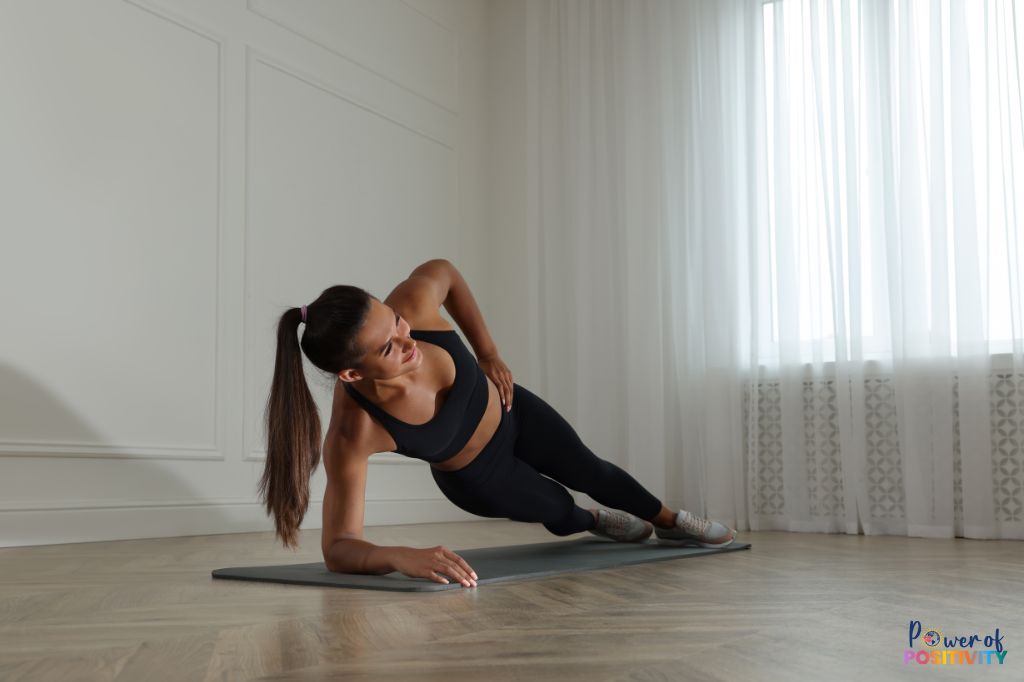
- How To: Start in a side plank position, resting on one forearm with your body in a straight line. Hold the position, keeping your core engaged, then switch sides.
- Benefits: Targets the obliques and helps build stability in the entire core.
- Reps/Sets: Hold for 30-45 seconds per side, 3 sets.
 What Happens to Your Body When You Do Side Planks?
What Happens to Your Body When You Do Side Planks?
At-Home Abs Workout Routine (15-20 Minutes)
Warm-Up: 2-3 minutes
- Jumping Jacks: ~1 minute
- High Knees: ~1 minute
Circuit: Repeat 3-4 times based on fitness level
table {
width: 100%;
border-collapse: collapse;
margin-bottom: 20px;
}
th, td {
border: 1px solid #ddd;
padding: 12px 15px;
text-align: left;
}
th {
background-color: #19376D;
color: white;
text-transform: uppercase;
}
td {
background-color: #fff;
color: #333;
}
tr:nth-child(even) {
background-color: #f9f9f9;
}
h2 {
text-align: left;
color: #333;
}
 Exercise Exercise |
 Reps/Time Reps/Time |
 Rest Rest |
|---|---|---|
 Plank Plank |
Hold for 30 seconds | 15 seconds |
 Bicycle Crunches Bicycle Crunches |
15 reps per side | 15 seconds |
 Mountain Climbers Mountain Climbers |
20 reps per leg | 15 seconds |
 Russian Twists Russian Twists |
20 twists per side | 15 seconds |
 Leg Raises Leg Raises |
15 reps | 15 seconds |
- Cobra Stretch: 30 seconds
- Child’s Pose: 30 seconds
Progressive Overload & Frequency
Progressive Overload
Progressive overload is a key concept in building muscle and improving core strength.
It involves gradually increasing the intensity of your workouts to continually challenge your muscles, preventing a plateau and encouraging growth. For core workouts, this could mean:
- Increasing Reps/Sets: Start with a moderate number of reps (e.g., 10-15) and gradually increase the volume as your core strengthens.
- Increasing Time Under Tension: In exercises like planks, increase the hold time by 10-15 seconds over time.
- Adding Variations: Introduce more advanced versions of each exercise. Move from a regular plank to side planks or plank-to-push-up variations.
Frequency
For optimal results, core exercises should be performed 3-4 times per week, allowing time for recovery between sessions. O
Overloading the core daily without rest can lead to strain. It’s essential to give muscles time to heal and adapt to the increased challenge.
Including core exercises in a balanced fitness routine with strength training and aerobic activities can enhance overall results.
This combination of progressive overload and structured frequency will ensure that your core muscles continue to grow stronger and more defined over time.
Cool Down and Stretching
Cooling down and stretching after a core workout is essential for aiding recovery and preventing injuries. Cooling down allows your heart rate and breathing to return to normal, while stretching helps prevent muscle tightness and soreness.
Static stretching (holding a stretch) after your workout is most effective for relaxing the muscles, improving flexibility, and reducing the risk of strains.
Incorporating stretches like the cobra stretch and child’s pose targets your core, lengthening the muscles you’ve just worked and promoting better recovery.
FAQs
Can I get six-pack abs without using any equipment?
Yes, you can achieve six-pack abs without equipment by following a consistent workout routine that targets your core muscles, such as planks, bicycle crunches, and leg raises. Combine this with a balanced diet and proper nutrition to reduce body fat, as visible abs are largely dependent on fat loss.
How long does it take to see results from ab workouts?
Results vary depending on factors like body fat percentage, workout consistency, and diet. Typically, with regular workouts (3-4 times a week) and a healthy diet, you may start seeing improvements in your core strength within 4-8 weeks. Visible abs, however, depend on reducing overall body fat.
Should I do ab exercises every day?
No, it’s important to give your muscles time to recover. Doing ab exercises 3-4 times a week is sufficient. Recovery days allow your muscles to heal and grow stronger, preventing overuse injuries and improving overall results.
What’s the best time of day to do ab workouts?
The best time to do ab workouts depends on your personal preference and schedule. Some people prefer working out in the morning for a fresh start, while others find evening workouts more convenient. As long as you’re consistent, the time of day doesn’t significantly affect your results.
Final Thoughts
Achieving strong, defined abs takes consistency and a bit of perseverance. Keep showing up, keep pushing yourself, and remember that results come from steady effort over time.
But don’t forget—abs aren’t just built in the gym (or living room). Nutrition plays a crucial role too. A balanced diet, rich in whole foods, fuels your progress and helps reveal those hard-earned muscles.
So, stay patient, keep your focus, and most importantly—enjoy the journey. Your core is calling, and it’s ready for greatness!
The post The 10 Best Abs Workout at Home Without Equipment appeared first on Power of Positivity: Positive Thinking & Attitude.


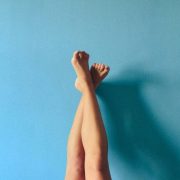
 Improved Balance: Exercises like planks enhance stability, vital for sports and
Improved Balance: Exercises like planks enhance stability, vital for sports and  Functional Strength: Exercises like mountain climbers strengthen your abs and other body areas, improving coordination.
Functional Strength: Exercises like mountain climbers strengthen your abs and other body areas, improving coordination. Endurance: Holding exercises like planks boosts core endurance over time.
Endurance: Holding exercises like planks boosts core endurance over time.